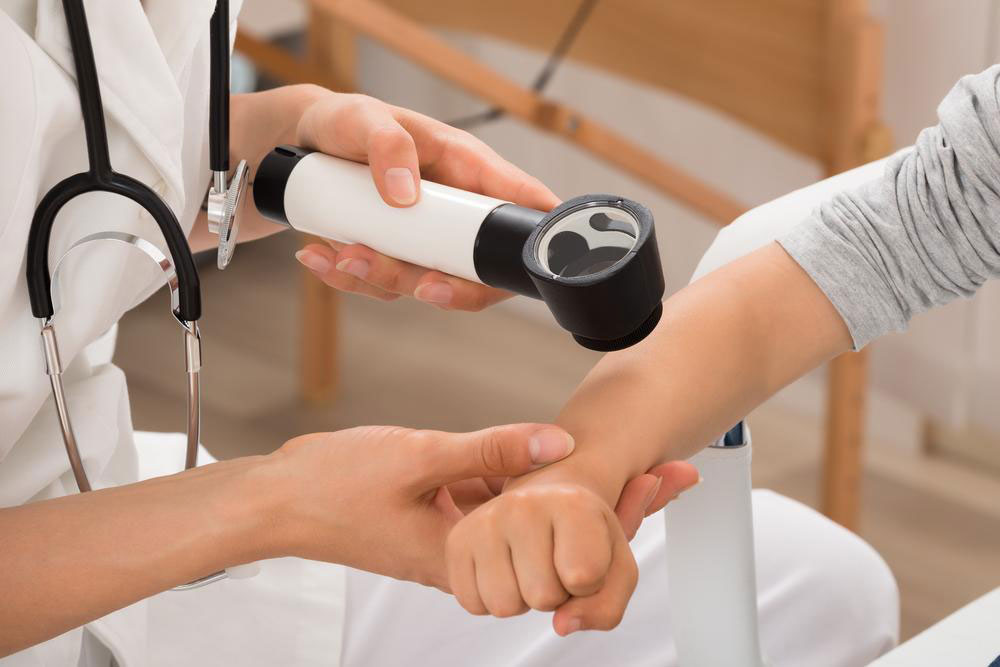Effective Treatment Options for Atopic Dermatitis
In the country, more than 18 million suffer from atopic dermatitis. This condition is a type of eczema which affects the skin. This condition commonly begins in childhood and can progress into adulthood. It is important for a person to know the right atopic dermatitis treatment plans for effective management of the condition.
What Is atopic dermatitis?
This condition is characterized by inflamed skin and itchiness. Although this condition is mostly seen in children, it can happen at any age. It is a chronic condition with periods of extreme redness and itchiness on the skin and asthma or hay fever may occur along with it.

Signs and symptoms can differ from person to person but the most common ones include extremely dry or scaly skin, itching, red or brown patches all over the body, and tiny raised bumps or open sores due to scratching. In children, the first symptoms are usually dry and scaly skin patches that are seen on the face, forehead, and scalp. Atopic dermatitis pictures mostly show children with a patch or patches of reddened skin on the cheeks.
Atopic dermatitis is a genetic condition that prevents the skin from retaining the moisture it needs. This leads to the skin easily getting affected by several environmental factors and allergies.
How is atopic dermatitis treated?
There is no cure for atopic dermatitis. However, with the right treatment, symptoms can be reduced and a person can experience a normal life.
Atopic dermatitis treatment begins with examining a person’s skin and checking for a family history of the condition. As this is a chronic condition, treatment, and care over a long period of time can be effective in reducing the symptoms.
Treatment for atopic dermatitis is often a combination of medication and therapy. Medication can include creams and lotions to reduce the itching and inflammation of the skin, antibiotic ointments or oral antibiotics to treat infections of open sores. A new injection has been approved by the Food and Drug Administration (FDA) and may be used when other treatments don’t work.
Therapies such as wet dressing therapy and light therapy are also effective. Wet dressing therapy is done by wrapping the affected area with wet bandages. In light therapy, a person is exposed to controlled emissions of sunlight or artificial UV light. This can be effective for people who do not respond to topical treatments. However, frequent light therapy increases a person’s risk of skin cancer and is not given to children or infants. A doctor may also recommend counseling sessions and behavior modification techniques for people with habitual scratching.
For babies, atopic dermatitis treatment can differ due to their sensitive skin. It is important to make sure high or low temperatures and all skin irritants are avoided. Parents should moisturize an infant’s skin with baby oils and creams. In case of a persistent rash, a doctor may prescribe oral medication to help with the symptoms.
Home remedies and care
A number of steps can be taken to prevent new outbreaks of atopic dermatitis eczema. These lifestyle modifications and self-care remedies are important steps to follow to prevent skin infections and flares.
- Frequent moisturizing of the skin
It is important to find a moisturizing treatment such as bath oils, lotions, and creams that work with your skin and apply it at least twice daily. - Application of anti-itching creams or oral medication
A twice a day application of an anti-itch cream after moisturizing can help provide relief from the itching. Allergy medication such as antihistamines or Benadryl can be taking in severe cases. However, this can cause drowsiness. - Avoid scratching
Scratching the affected area is a habitual reaction for most people struggling with atopic dermatitis. Instead of scratching, pressing the skin may provide relief. Children’s nails should be trimmed to avoid open sores and infections. Using a humidifier can also help dry, itchy skin from forming. - Bandage the affected area
Bandaging the skin after applying an ointment helps protect the skin and reduces the urge to scratch at it all the time. - Warm bath
Running a warm bath with natural and gentle exfoliants such as ground oatmeal and soaking in the tub for a few minutes can help in providing relief. Apply moisturizer immediately on damp skin. - Use of mild and unscented soaps
Perfumed or scented soaps can worsen this condition. Make sure the soap is non-alkaline and wash it off immediately after use. - Get help for stress or anxiety
These conditions can worsen atopic dermatitis. If symptoms of stress or anxiety develop, it is important to talk to a therapist or counselor. There are support groups all over the country for people dealing with this condition.

